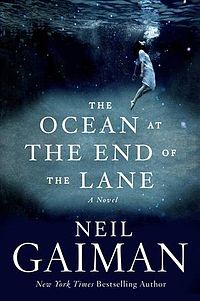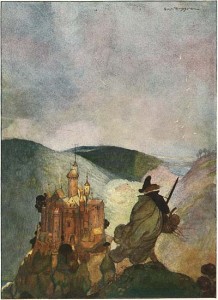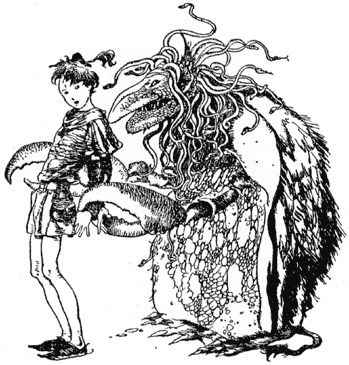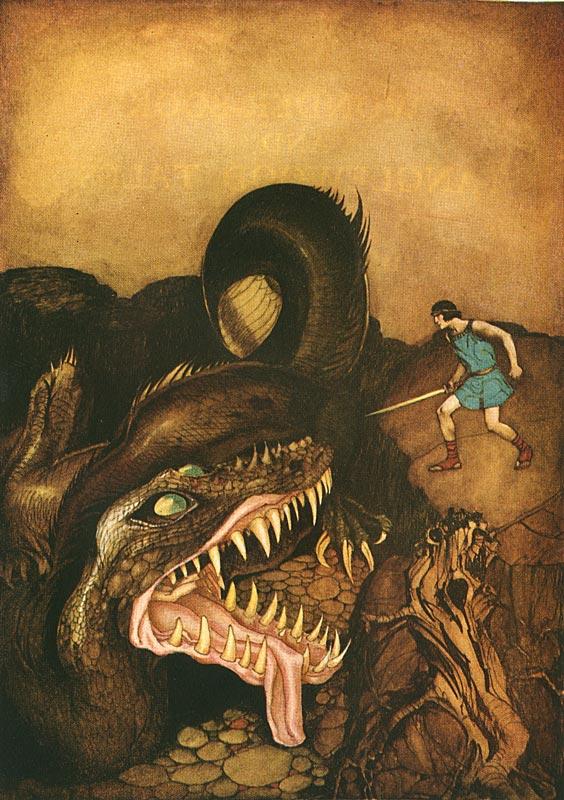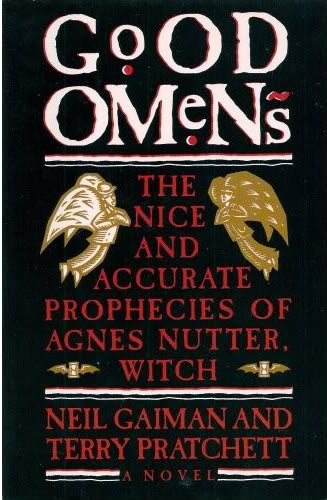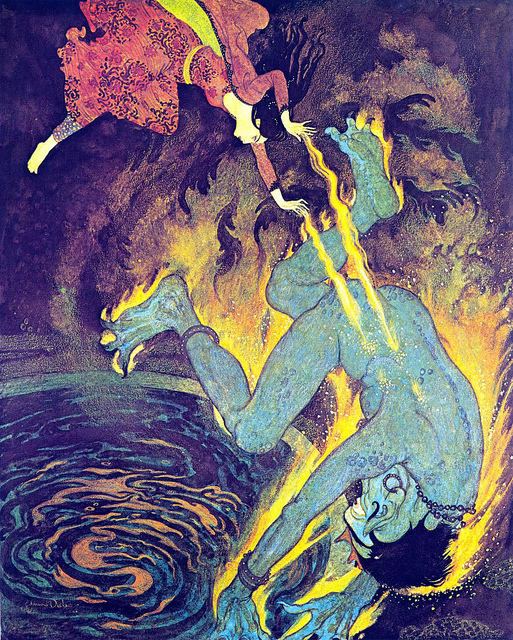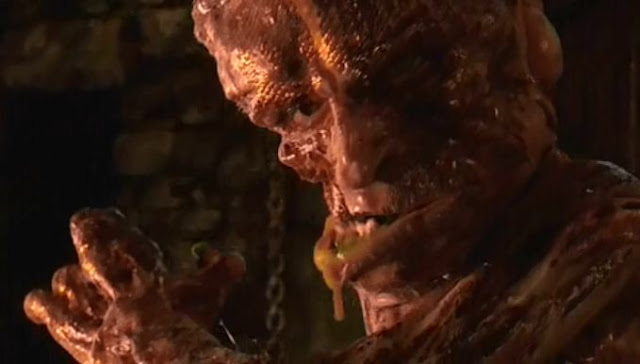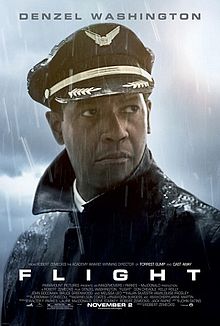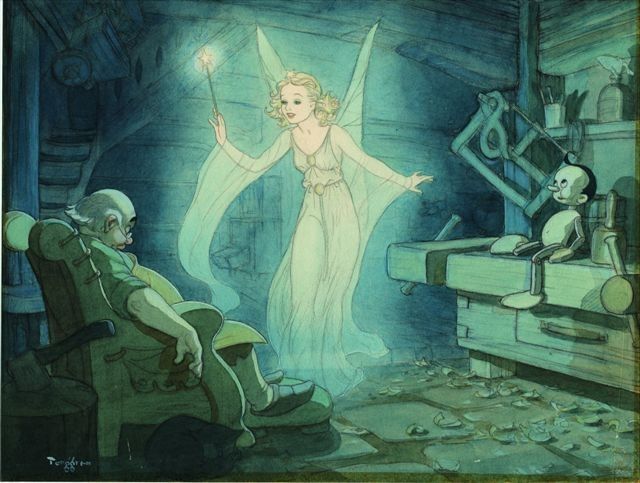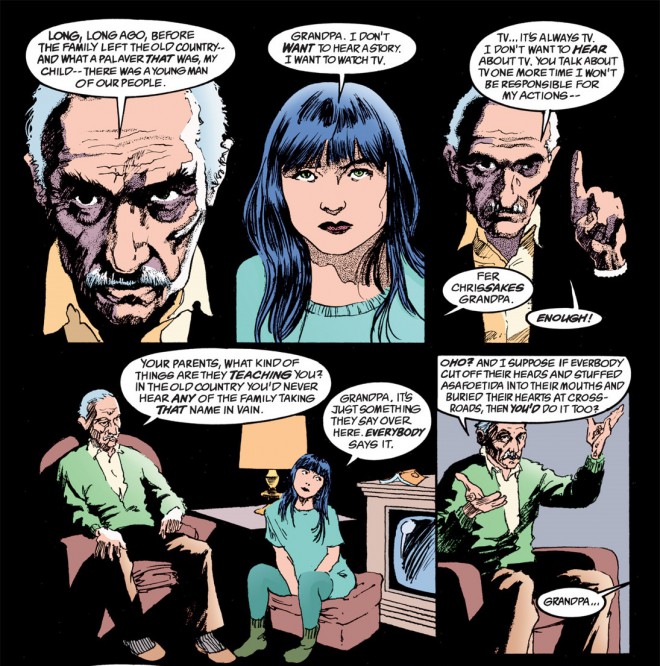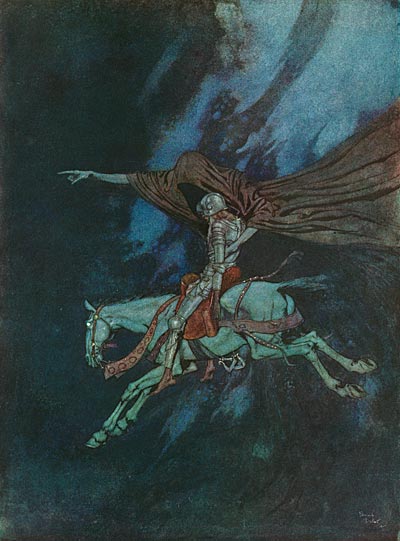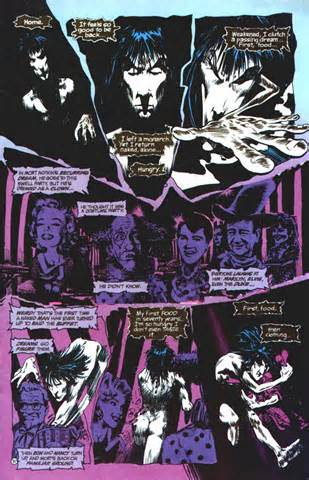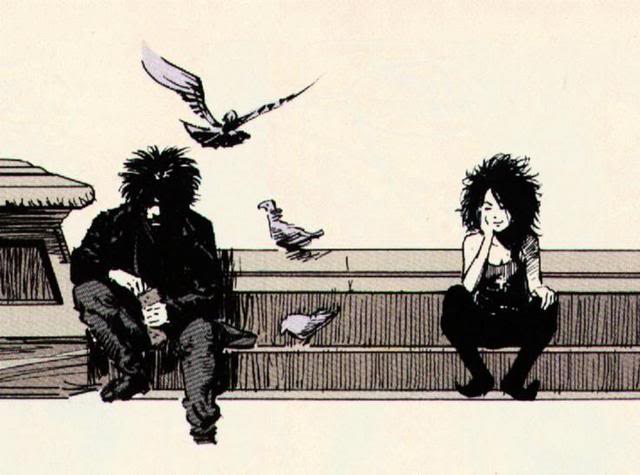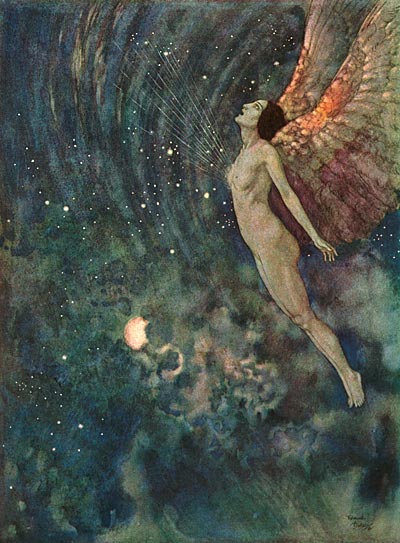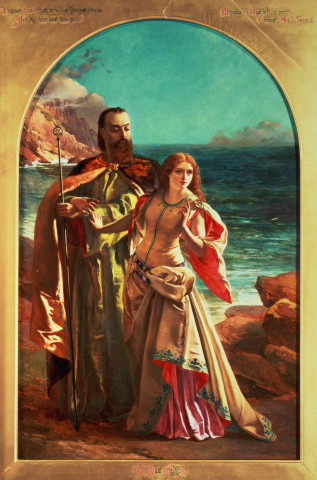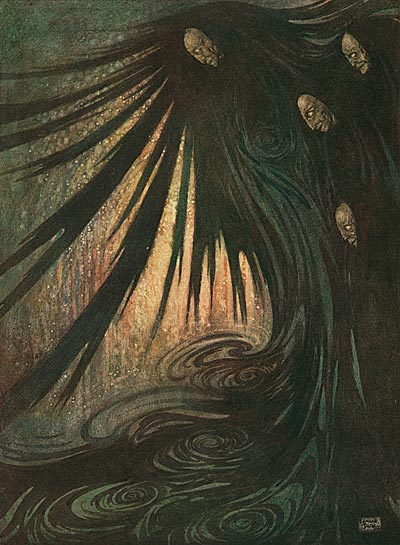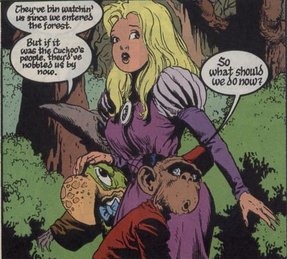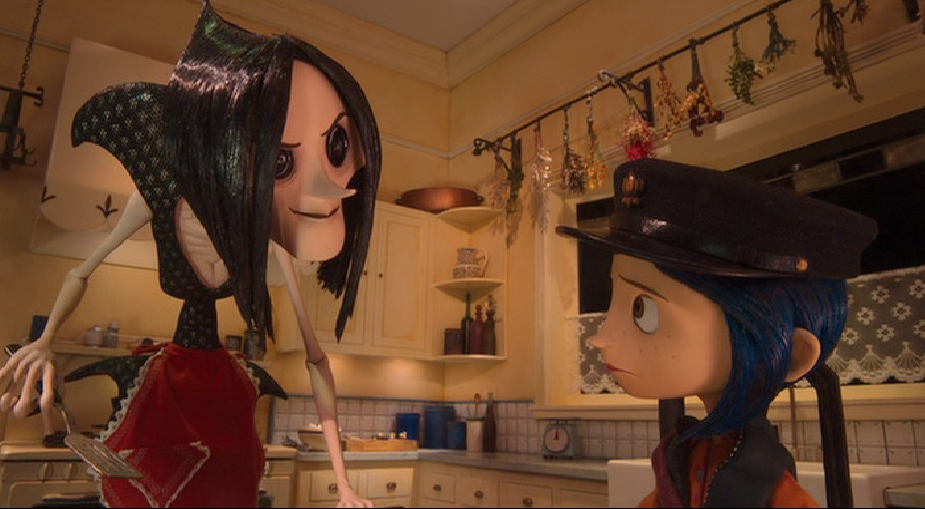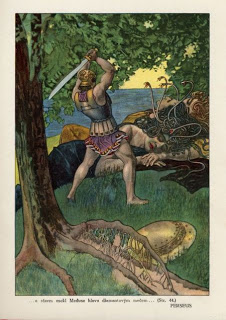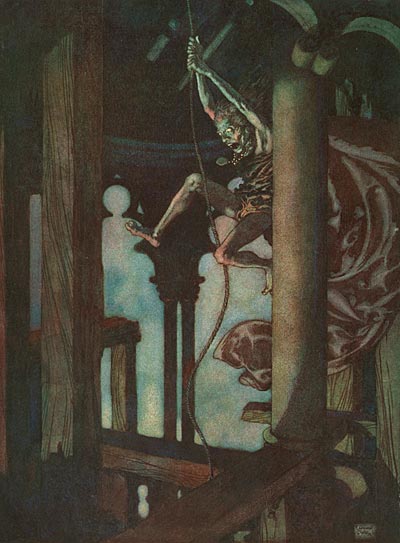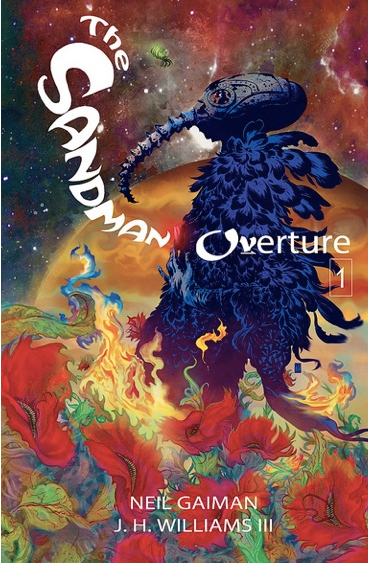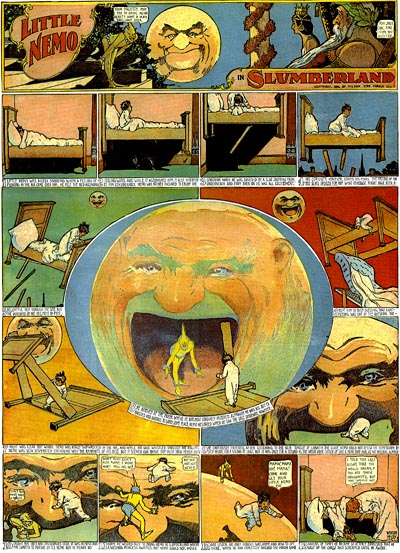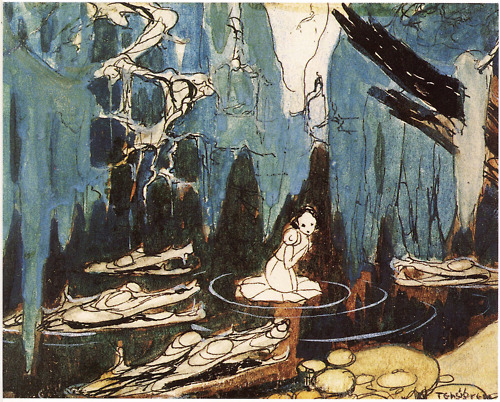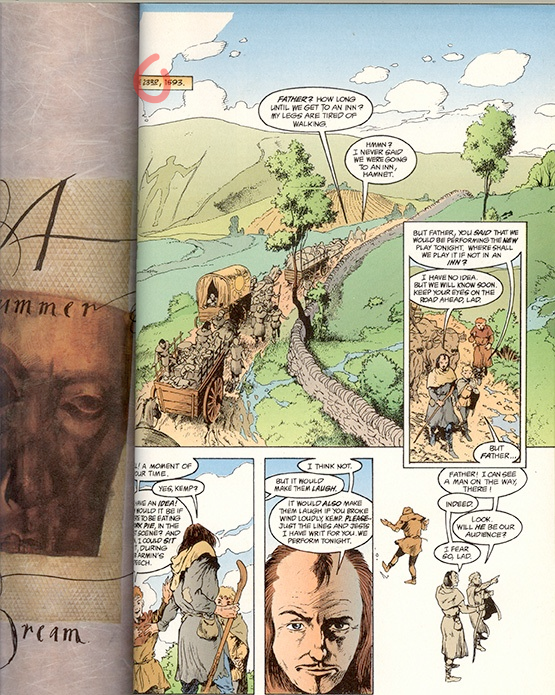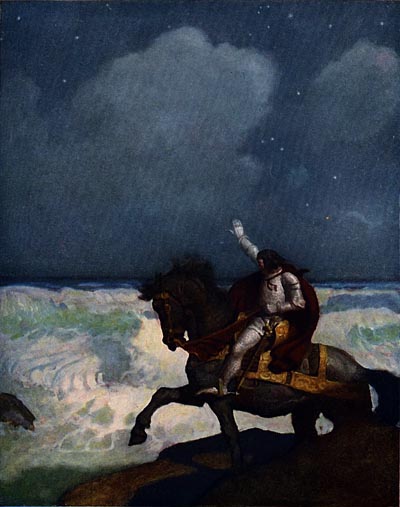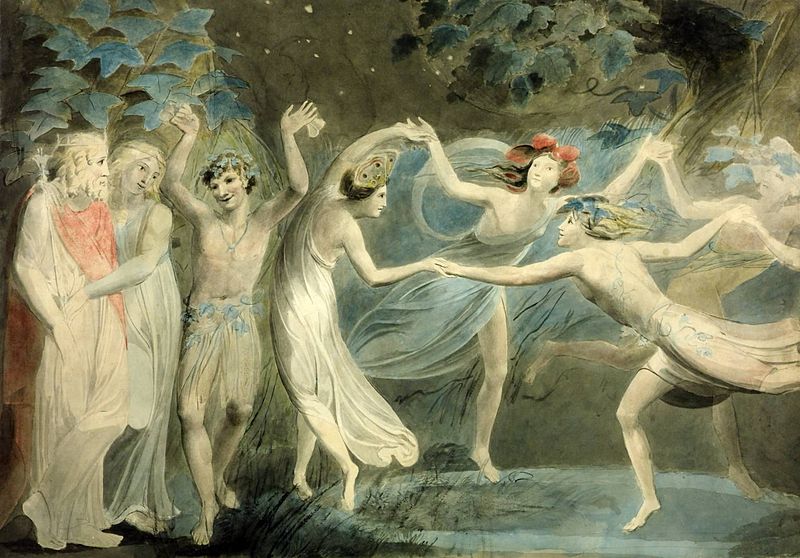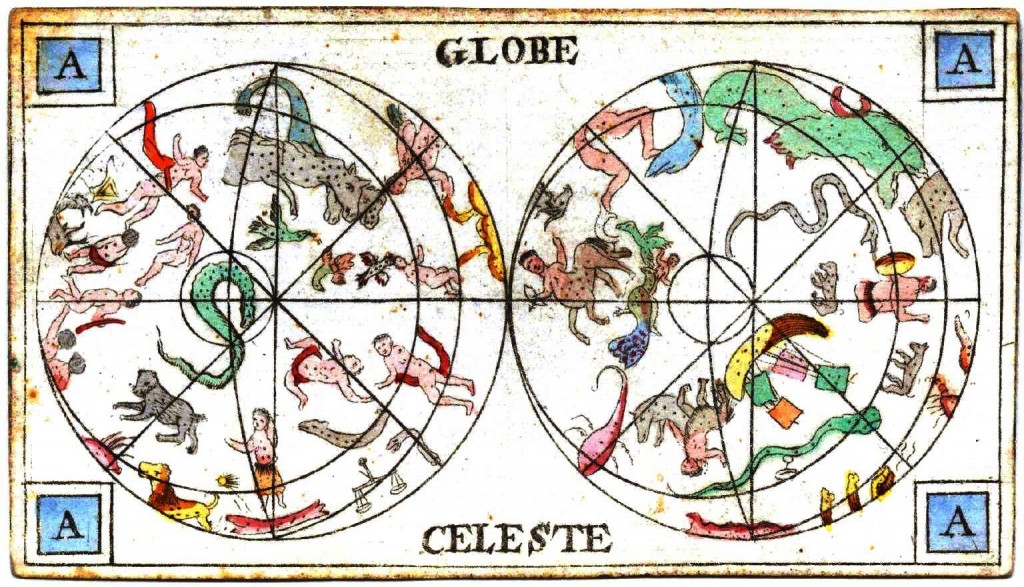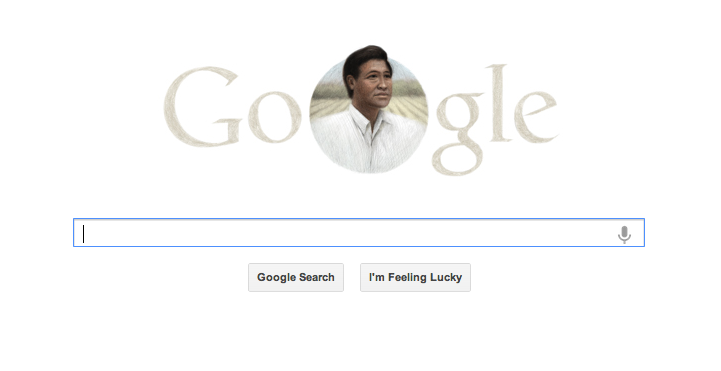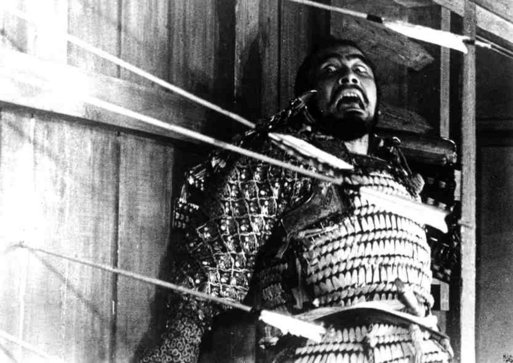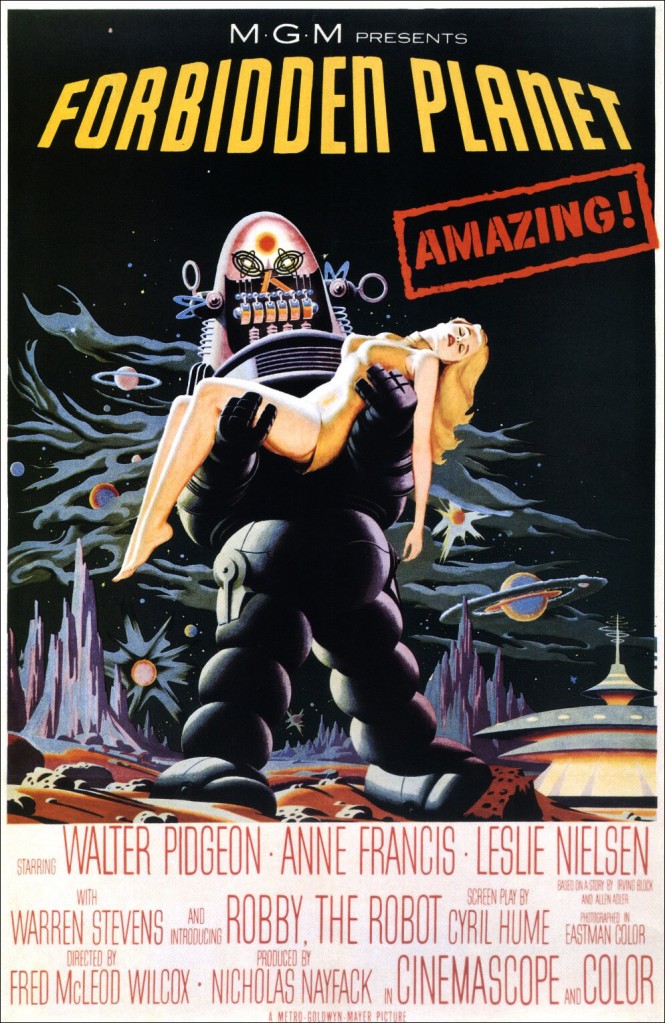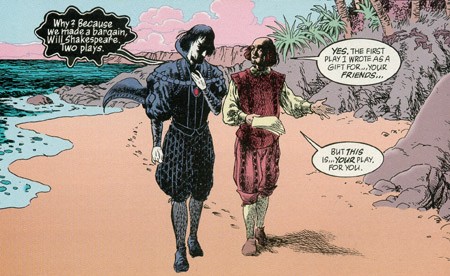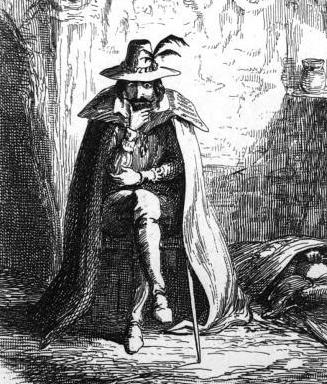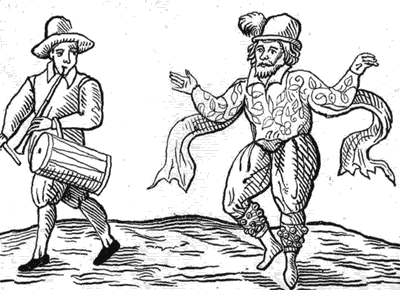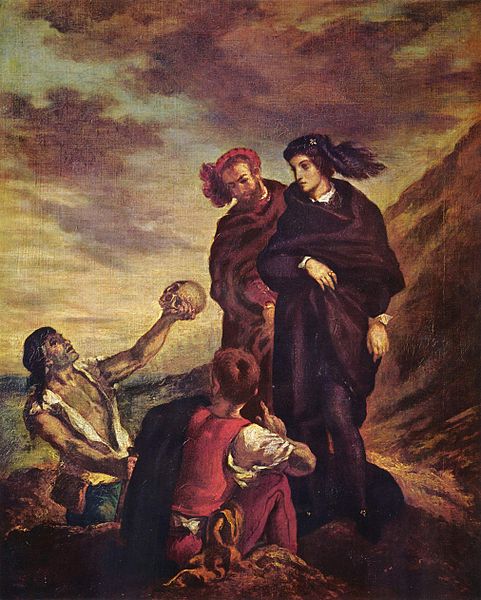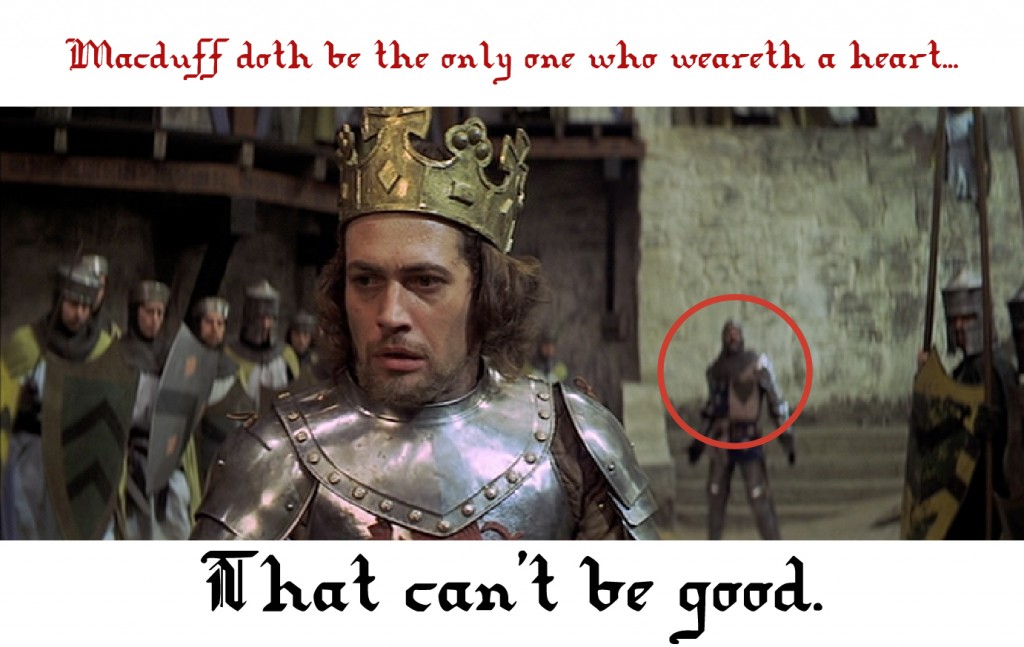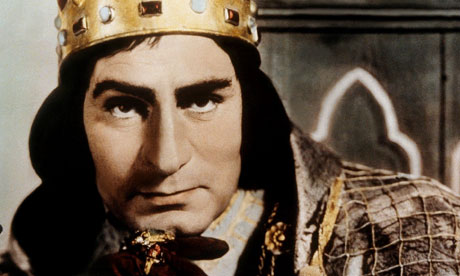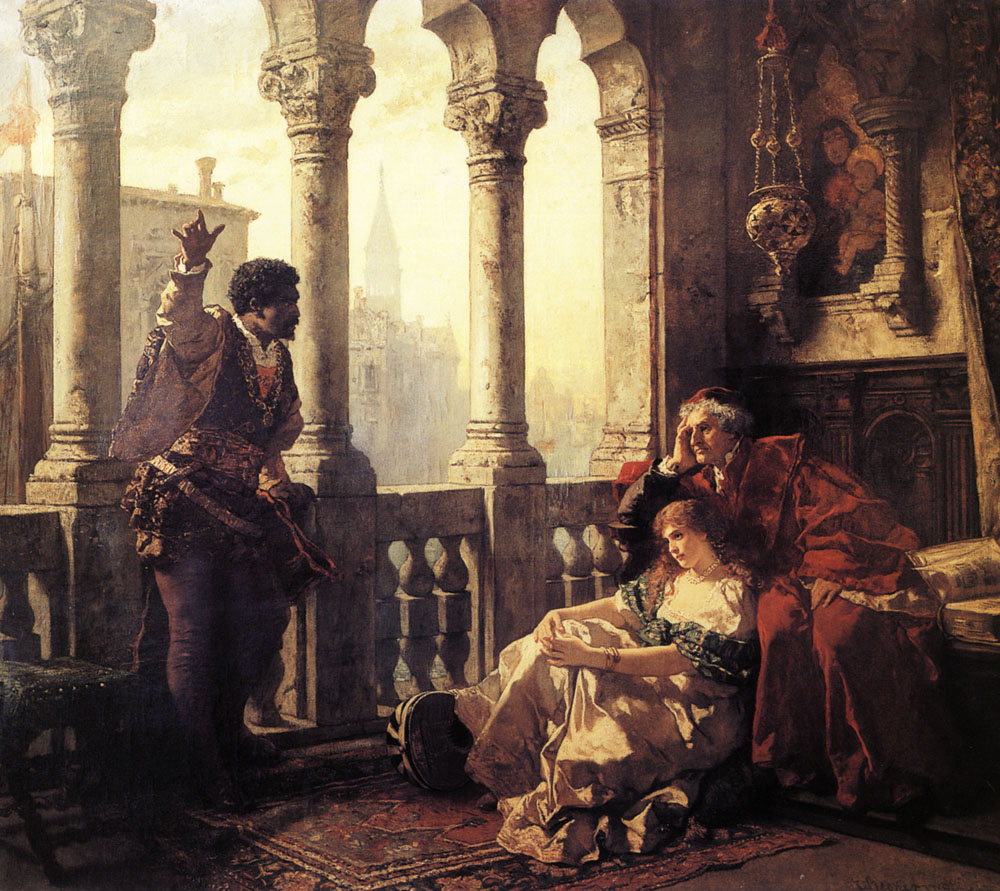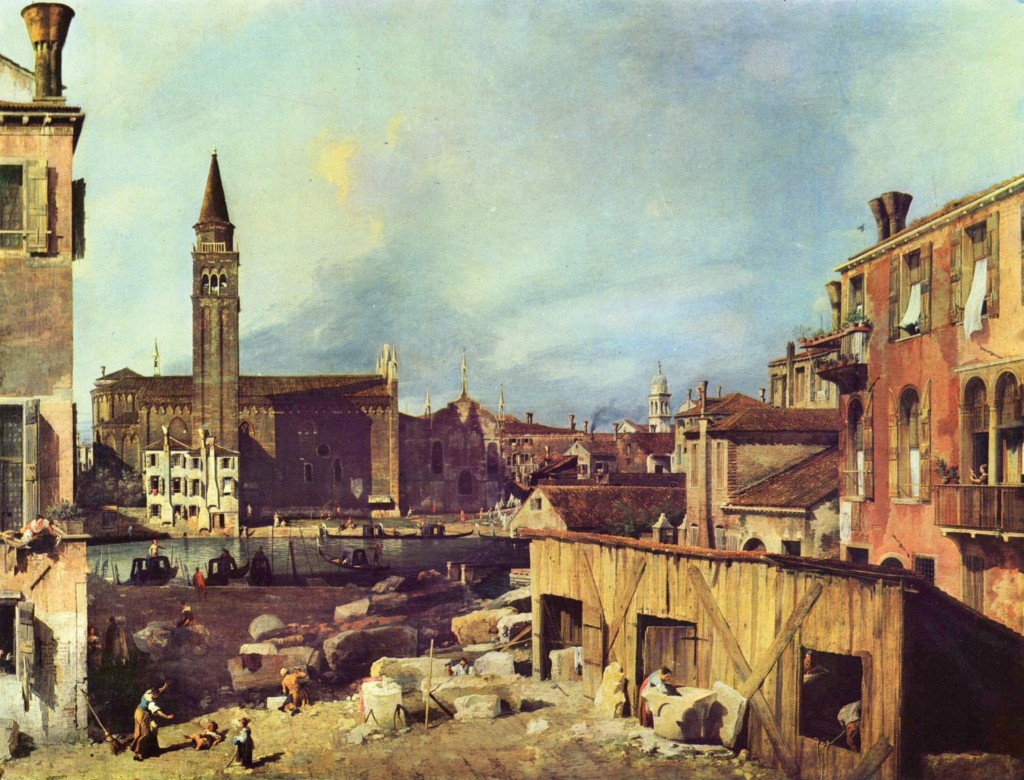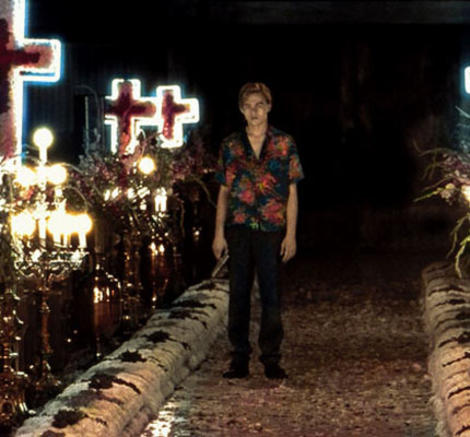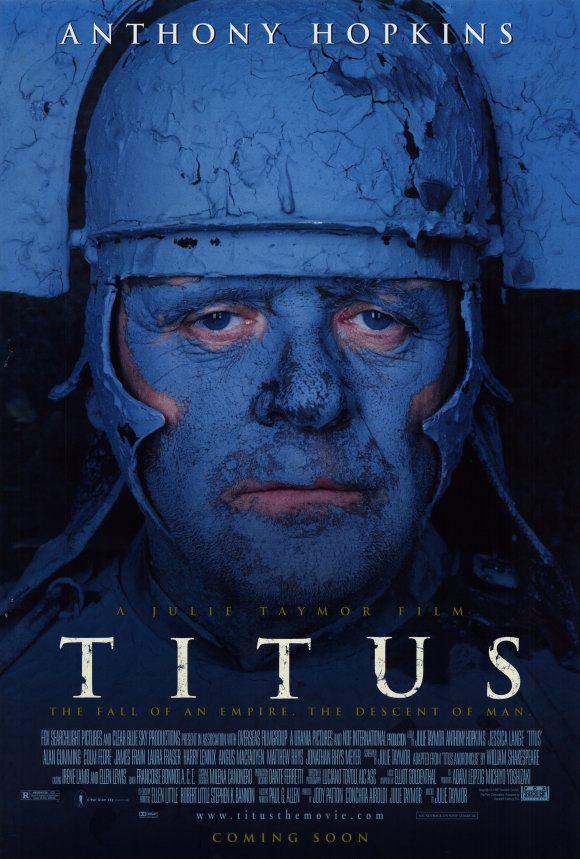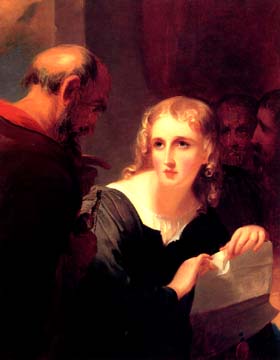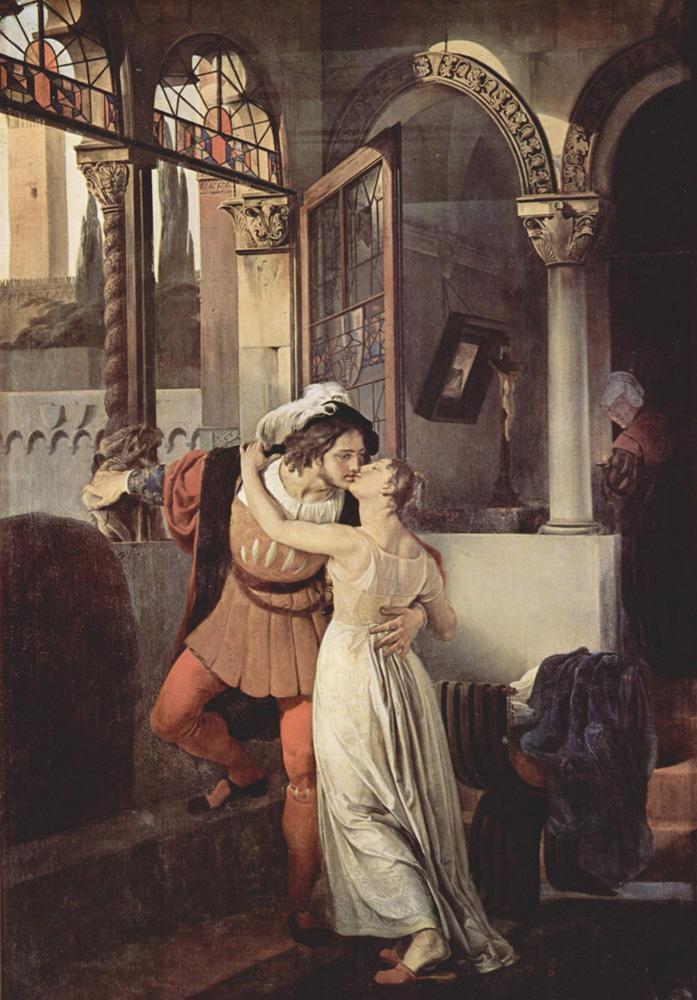This should have been finished on July 23rd, but there were complications similar to, but not exactly like, those involved in the Shakespeare post. My apologies, dear readers. Onward we go.
Neil Gaiman has recently released a new novel called The Ocean at the End of the Lane. This is not going to be a review of that book, which is unfortunate for a few reasons.
Most importantly, if this were a review, then mentioning it to Neil Gaiman on Twitter would have at least a reasonable chance of getting retweeted. After all, in the acknowledgements section of that book, Mr. Gaiman specifically thanks “the good folk of Twitter,” so in theory that bodes well for those who forward their reviews to him via tweets.
Regrettably, the odds of having this post retweeted by Mr. Gaiman are not very promising. I calculate a mere 23 percent chance of success in this matter, at best. At best. The mathematics involved in such a calculation is rather unconventional, so let’s put math aside for now and examine the factors involved in an abstract way.
For one thing, the historical record indicates that while Neil Gaiman still retweets reviews about The Ocean at the End of the Lane, he was at least somewhat more likely to do so a few weeks ago, which was closer to when the book was being released. For another thing, this is not a review of that book, as was established earlier.
Discussing the historical record displays a lot of guts, Gaiman warns.
Furthermore, it is unprecedented for any celebrity to retweet or comment upon anything relating to The nsavides Blog. A few of them have been given ample opportunities to do so, for example in regards to this and this and such, but instead of directly acknowledging the strange mysteries that can be found here, celebrities prefer to focus their attention on other matters.
For example, celebrities have been known to retweet things like this enlightened declaration from the fabled @gnosticDonkey8fold account: “Going to dean to insist that your novella be included in curriculum in place of Plato’s Republic. YOUR NOVELLA IS THAT GOOD!!!! ” Other probable celebrity retweets include this gem from @HumblyMumblyButtons: “You’re movies is so good, I name my childs after each one. 4ever you’re number #1 fan!!”
Grimm’s Fairy Tales illustration – Gustaf Tenggren
To be fair, there are some celebrities who are more humanitarian minded and prefer to retweet something like this heartwarming bit from @GushingGretta❤ World: “You R 2 thoughtful! Thanks for doing 30 min of community service. In the end only kindness matters! Nominating you for immediate sainthood.” Of course there are also the pleas for help disguised as retweets, but that kind of use goes beyond the scope of this post.
(If that sort of thing is of interest though, keep an eye out for an upcoming blog post entitled: The Science Behind Amanda Bynes’s “I have nothing to prove but proof itself” Tweet. Yes, that’s an Amanda Bynes joke, folks. I know she’s going through a hard time, and I seriously hope she gets better, but I guess it is still a sore point for me. You see, I was going to write What I Like About You: A Tribute to Amanda Bynes, but she really hurt my feelings when she said “If you’re not hot I don’t care about you.” You know Amanda, not everyone can look like Drake, but you don’t have to be mean about it, OK?)
Drake = What a man! (Photo credit: Brennan Schnell, eastscene)
That’s a bit of a tangent, I know. Forgive me for that, but it’s easier for me this way, and it does sort of relate to the discussion at hand. Now is a good time to mention that I have a lot respect for Neil Gaiman. He is the only writer I can think of who has achieved enormous success as a comic book writer, novelist, screenwriter, and children’s book author.
It’s not just that though. His stories have a deep personal significance to me. I will probably share this revelation with him even though I realize that he will ignore it, more likely than not, and that will be devastating for a few days at least. Hence my humble attempts at humor.
Twitter is a big part of Neil Gaiman’s public persona, so it is not a bad place to start an exploration. He has over 1.8 million followers, which is notable for any celebrity. To put that in perspective, that’s less than Amanda Bynes’s followers, but more than those who follow Edward Norton or Gwyneth Paltrow. For a writer though, he has an astronomical number of followers. By comparison, Anne Rice, another prolific fantasy writer, has about 66,000 followers, so Neil’s unconventionally strong social media presence is worth examining.
Seldon and the Golden Cheese – Gustaf Tenggren, 1935
Wired magazine once published an illustration demonstrating an inverse relation between how active a writer is on Twitter and the significance of his work. Generally I have found this to be true, but not so with Neil Gaiman.
His work has broad appeal and critical acclaim from the likes of Norman Mailer, Stephen King, and Clive Barker. The list of awards Neil has won is long, and he’s the only writer to win a World Fantasy Award for a comic book, but in spite of being a prolific writer, Neil still has time to answer fan questions, share his thoughts, and retweet notable tweets on a daily basis. That’s unusual for a writer, but essentially de rigueur, I suppose, for the husband of Amanda Palmer, the rock star known for boldly reimagining the artist-fan relationship and what it means to live in public.
Here’s Amanda’s popular TED Talk about the subject:
By themselves, Neil Gaiman and Amanda Palmer are influential enough, but together they form an unstoppable social media Megatron that not even the NFL’s Calvin Johnson can rival. While Calvin Johnson is a fearsome player on the field for which he has earned the Megatron moniker, his social media numbers look paltry when compared to those of Neil and Amanda. Then again, Calvin Johnson does have a lucrative deal with Nike, so don’t feel too bad for the guy.
That said, numbers alone are not all that impressive to me. After all, Adolf Hitler was #1 in lots of categories, and if anyone was ever truly willing to do whatever it takes to be #1, it was Adolf Hitler. It’s an extreme example, certainly, but there are lessons to be learned in the extremes.
The Red Fairy Book – Gustav Tenggren, 1924
To bring it back to a more pedestrian level, many people mistakenly equate high stats with admirable significance, and as it happens, many of these same people are very active in social media.
With Neil it seems different. He’s using the service to do all kinds of interesting things that go way beyond mere self promotion.
For example, Neil will occasionally do collaborate projects with his followers like he did with Blackberry’s innovative Keep Moving campaign. Like his wife, Neil seems genuinely enthusiastic to be a part of someone else’s special creative moment, and this video is a good illustration of that:
http://www.youtube.com/watch?feature=player_embedded&v=jg3SfhTXNYo
Neil makes a living not just through his creative work, but from the value that others perceive his creative work to have, so collaborating with his fans is risky. If Neil Gaiman produces something horrible, even while collaborating with fans, then his reputation will suffer.
Besides, the books he writes consistently earn bestseller status, so it’s not like he needs the money. If Neil didn’t enjoy the collaborative process, then it seems unlikely that he would interact with others to the extent that he does. This is not just a throwaway point. What Neil does stands in stark contrast to our collective expectation of the writer as recluse, in the manner of Ernest Hemingway and J.D. Salinger.
Neil himself says that “writing is, like death, a lonely business.” How then does he manage to defy the writer stereotype so often and yet still produce compelling stories so consistently? Might his sensibilities as a writer somehow affect how he acts as a person, and what are some defining characteristics of a Neil Gaiman story that make it so unique?
In search of answers, I spent some time revisiting Neil’s work. I have read many of Neal’s books in the past, but I figured this would be a good chance to catch up on ones that I had missed like Good Omens. It also gave me an excuse to read Neil’s newest book, The Ocean at the End of the Lane and to watch his Neverwhere TV series. (To quote the proverbial wisdom about World War Z, “The book is better.”) I rewatched Coraline, which is one of my favorite animated films, and Beowulf, which is a mixed-bag of a film but one with enough interesting elements to justify revisiting.
However, the majority of my time was spent going back through Neil Gaiman’s seminal Sandman series. That graphic novel series is what put him on the map, and it is a masterpiece that rewards deliberate study of its construction. Sandman is so unlike anything that has come before that my first journey through the series, which happened over the course of a few years, was largely spent fighting my way past disorientation. It was mostly an enjoyable journey, but it took awhile for me to get used to Neil’s unique storytelling approach in the series, and I missed a lot of things.
Sandman #50 “Distant Mirrors – Ramadan” – DC Comics, 1993
This time around I read the Sandman graphic novels within a few weeks, and it’s much easier to notice how the stories relate to each other when you do that. I also had the benefit of consulting The Sandman Companion by Hy Bender, which was an invaluable resource not only for pointing out some connections that I missed but also for providing Neil’s own thoughts about the stories. While good art can and should stand on its own, we are better equipped to unfold its mysteries when we know something about the context in which it was created, and that is certainly true with Sandman.
Be warned that I will eventually discuss a few key plot points. I will warn you again in a few paragraphs, as we get closer to the spoilers.
To those who don’t know, Sandman is a series about Morpheus, the lord of dreams, and how he’s influenced the course of human events since the beginning of time. Students of mythology will recognize that Morpheus is a god of dreams who first appears in Greek mythology. Fun fact: morphine was named after that god. More recently, the name of Morpheus has resurfaced in the Matrix films. According to Neil Gaiman himself, Laurence Fishburne was instructed to play the character like he appears in Sandman.
Sandman #51 “A Tale of Two Cities” – DC Comics, 1993
The Matrix shares some similar preoccupations with the Sandman series, so the instructions to Laurence Fishburne are revealing. More on that to come, but for now it is worth mentioning that Sandman is an inventive synthesis of disparate mythologies and genres, which helped to inspire the Matrix, another inventive synthesis of disparate mythologies and genres.
Sandman references Greek mythology, but also Egyptian myths, Scandinavian myths, Russian folktales, African folktales, DC Comics, Christian theology, Wiccan rituals, the Wizard of Oz, Arabian Nights, and the work of writers like Geoffrey Chaucer, William Shakespeare, and Edgar Allen Poe, just to name a few.
This looks somehow familiar.
It’s not just that Neil Gaiman is well read. That goes without saying. The remarkable thing is how well he can imitate the conventions of the storytelling traditions that he incorporates.
Read “The Hunt” in Sandman: Fables & Reflections, and you might conclude that Neil grew up in Eastern Europe hearing stories about werewolves and Baba Yaga and gypsy travelers: It doesn’t feel like someone doing an imitation of an Eastern European folktale. It feels like only someone who grew up in the culture could write it.
Then a few pages later you come across “Distant Mirrors – Ramadan,” and it seems like a story that could only have been written by someone who grew up in the Middle East hearing stories about Ali Baba, and Scheherazade, and Aladdin, not the Disneyfied versions, but the real things.
Arabian Nights illustration – Edmund Dulac, 1914
Neil’s ability to fuse one world myth into another as needed for the story at hand is unsurpassed. That ability is on display even in a film like Beowulf, the computer-animated film directed by Robert Zemeckis and written by Neil Gaiman and Roger Avary.
At first glance the film seems like just another contemporary take on a classic piece of literature, but it is more complicated than that. The original version of the story is an Old English epic poem set in Scandinavia. As such it has many of the conventions found in Scandinavian mythology: men who must prove themselves through brute force in battle, a dragon that guards gold treasure, a great hall where drinking and feasting is done, and so on.
The poem is a rather straightforward look at what it meant to be a hero in ancient Scandinavian culture. In the film version, the premise seems to be, “what if the original storytellers lied about how heroic Beowulf was?”
There’s a spoiler coming up soon, but I can’t imagine that it matters to most of you. If you haven’t seen Beowulf yet, you probably won’t see it because you’ve heard about that silly scene where Beowulf fights Grendel in the nude. Admittedly the scene is ridiculously bad. It is as if the filmmakers couldn’t decide if the scene should be the world’s worst setup for Viking pornography or a clunky homage to Austin Powers, and the justifications for doing it based on the original text are razor thin. (As to why, read this: http://quodshe.blogspot.com/2007/09/naked-beowulf-wtf.html. I really hope it wasn’t Neil Gaiman who fought the hardest to keep that scene as it stands, but if he was … Well, nobody’s perfect.)
Beowulf – Paramount, 2007
In the original version, Beowulf kills Grendel’s mother shortly after he kills Grendel. In the film, Beowulf does not kill Grendel’s mother. Instead she seduces him, and he beds her. In so doing, Beowulf fathers a dragon that will terrorize the kingdom in a few years. Later in the film Beowulf himself acknowledges that he is not the hero everyone thinks him to be; He has been corrupted by Grendel’s mother just as old king Hrothgar had been.
The notion of an epic hero who falls from greatness when under the influence of a seductive woman comes from Greek, not Scandinavian, mythology. Jason of Argonauts fame is destroyed by Medea the witch. The Sirens try to use their seductive voices to lead Odysseus and his crew to their demise. Orpheus journeys into Hades in a doomed attempt to save Eurydice, his life takes a downward spiral as a result, and he later gets devoured by the female worshippers of Dionysus. Etc.
Indeed it is the Greeks who give us the notion of falling in love. To the ancient Greeks that meant a hero who becomes less of a man when under the influence of a seductress. Christian stories, in contrast, suggest that the right kind of woman can make a hero stronger. To make this more clear it might be helpful to compare Orpheus to Dante from the Divine Comedy. Orpheus is dragged into hell because of a girl. Dante is in hell and manages to escape because of a different girl, because of the guiding love he has for Beatrice. For more contemporary examples, go back and rewatch Rocky or The Natural.
There are also references to Christianity in Beowulf, the most notable one being when King Hrothgar is asked if prayers for protection against Grendel should also be made to the “new Roman god, Christ Jesus.” To that Hrothgar replies, “The gods will do nothing for us that we will not do for ourselves. What we need is a hero.”
At first this line seems to be an attack on Christianity, but it takes new meaning when we realize that Hrothgar himself will not fight Grendel because Grendel is his son and that Beowulf is able to conquer Grendel, but not the evil that spawned him. At the end of the story, evil lives on, calling to question the value of Beowulf’s kind of heroism.
Queen Wealthow is the touchstone of the film. She sadly observes the corruption of King Hrothgar and then King Beowulf. It should be noted that the Queen wears a cross, suggesting that she is one of the few converts to the new faith and that her faith allows her to see the weakness in the kings when others cannot.
Robin Wright’s understated performance as the Queen is my favorite part of the film. Without expressing as much in dialogue, the Queen appears to yearn for the emergence of a true hero who is capable of resisting the evil at hand, and in so doing she ties together the Scandinavian, Greek, and Christian outlooks of the era. It is hard enough for a live-action film to capture something so subtle, so it is an impressive feat when that is conveyed through computer graphics.
The Queen’s presence in the story, the character design for Grendel that masterfully illustrates the pain of his inner world, and the occasional lyricism of the music make the film more than a stylized, spears-in-your-face, medieval adventure.
In Robert Zemeckis’s recent Flight there are also interesting uses of religious symbols, so I’m not sure how much of Beowulf‘s depth was due to Neil Gaiman, but in any case, it still feels very much like a Neil Gaiman story.
That’s not to say that Neil is a religious person. In a January 1989 interview with Steve Whitaker, Neil Gaiman said, “I think we can say that God exists in the DC Universe. I would not stand up and beat the drum for the existence of God in this universe. I don’t know, I think there’s probably a 50/50 chance. It doesn’t really matter to me.” 50/50 huh? Interesting.
OK. So Neil’s an agnostic, and we see that agnosticism in the existential angst of some of his gods, but in his stories he takes seriously the search for cosmic significance, and that’s a big part of the appeal that religion and mythology have for people.
Pinocchio illustration – Gustaf Tenggren
We live in an age of rapid scientific discoveries and scientific advancements: In the past century alone we saw the invention of the first mass-produced automobile, along with the airplane, radio, television, birth-control pill, microwave, satellite, personal computer, internet, digital camera, search engine, and cell phone, and our scientists have discovered nuclear power, the double helix, and how to put a man on the moon. All of these things have changed the way we live our daily lives and how our societies operate in drastic ways, so there is this pressure to downplay the mythologies of the past, to reduce all of existence to one struggle after another to be number #1, to accumulate more, and to have more sex than the next guy.
Has that made us a better society? We have all these conveniences but also the ability to annihilate an entire city with a push of a button, 24-hour access to the most devious pornography imaginable, hookup culture, consumer culture, an ever-growing potent range of narcotics, subprime mortgages and government bailouts, toxic environmental conditions, school shooters, terrorists, and snarky profanity-laced public discourse.
Maybe there is more to life than what science can tell us. Maybe there is still value in the old myths and stories. The Sandman story that best illustrates the conflict between the Old World and modernity is “The Hunt,” That’s the one involving an Eastern European folk tale which I mentioned earlier. In it Vassily tells his modern-minded, presumably college-educated, granddaughter a story. Throughout the story she interrupts him to make arrogant interjections, but by the end it becomes clear that Vassily’s outlook has allowed him to live a fuller, more meaningful life.
Sandman #38 “The Hunt” – DC Comics, 1992
That’s not to say that Neil romanticizes the past. In “An Epilogue, Sunday Mourning” an immortal character ends up in a modern-day Renaissance fair. He comments on how much dirtier the world was back then and how horrors like the slave trade made the past anything but an idealized playground of troubadours and fair maidens that Renaissance-fair enthusiasts wish it was.
Neil makes a similar point in “Doll’s House Part Five” when Gilbert tells an early version of “Little Red Riding Hood” that is far more bloody and suggestive than the version we tell our kids. The struggles of humanity have not changed all that much throughout the years Neil suggests, only the specific ways in which those struggles surface.
The genius of Neil Gaiman is that he has resisted the pressure to let the old myths fade away and has woven them into our contemporary understanding of the world while giving his readers a chance to connect to something cosmic. In the Sandman series, it’s not just the superheroes and villains, but also the ordinary characters who get mystical experiences and supernatural abilities.
That sort of thing is mostly absent from modern life, either because the divine doesn’t exist or because we’ve forced it out of our awareness. Whatever the case may be, it is not hard to see the appeal of a series that brings a divine mystery of existence back into daily life and does so in multifaceted ways.
Eldorado – Edmund Dulac, 1912
Another innovation of the series is that it gives us gods who are fleshed out characters and not just one-dimensional beings. Of the seven main godlike-beings in Sandman known as the Endless, three of them experience major character arcs throughout the series. Morpheus, or Dream as he is sometimes called, has the complexity to earn a Hamlet comparison from Peter Straub in his afterword to Volume VII.
Ah Shakespeare. He affects this story, like so many stories, in a great many ways.
Anyway, it’s refreshing to see that Dream, who has a penchant for wearing black jeans and a T-shirt on occasion, rivals the complexity in each of us. What if God was one of us, indeed. And why wouldn’t the gods of the universe or even a perfect God be at least as complex as we are?
If it really was one God who made both the lamb, with softest clothing wooly bright, and the tiger, burning bright in the forest of the night, then what a piece of work is God.
That’s a little mismatched quote for you, because well … it was either that or explosions in the form of animated GIFs to keep you engaged. What can I say, I chose the road less travelled.
Now I will go through the Sandman books from Volume I through Volume X and make some observations. This is meant to be more of a personal appreciation, rather than a comprehensive guide. Still, I will talk about some plot points as I mentioned earlier. Although I won’t give away everything that happens, you may wish to read the series before proceeding.
If you want more analytical resources, you can pick up The Sandman Companion
(affiliate link) or check out these links:
http://sequart.org/magazine/18443/sandman-1-8-preambles-and-introductions-full-of-sound-and-fury
http://www.arschkrebs.de/sandman/annotations
break
In the first few pages of Volume 1: Preludes & Nocturnes, we learn of a plot to capture Death. Then we see certain dreamers in Canada, Jamaica, the battlefield of Verdun in World War I, and London. Through their dreams we get a sense that something is not quite right in the world.
A story that opens up so quickly is not something I had encountered before. It clues us in that the stakes of the story have a global sweep. It’s a technique that has become more familiar with films like Independence Day and its imitations, but that film came to theaters a few years after Sandman was published.
Right away too we see a reference to Lewis Carroll’s Through the Looking Glass and learn how that story affects the girl who hears it read. This hints at the series’s interest in stories and in our fantasy lives and how both affect reality. The Matrix has similar preoccupations, so it is no surprise that it also alludes to Through the Looking Glass.
As the story unfolds, we learn that by mistake Morpheus is captured instead of Death and that Morpheus’s captivity causes further chaos to dreams throughout the world.
When Morpheus finally speaks, we see Todd Klein’s stylized letters for the character:
Sandman #1 “Sleep of the Just” – DC Comics, 1988
The distinct black bubbles with white text are a defining characteristic of Morpheus. This is important because Morpheus sometimes takes a different form depending on who he visits, and the speech bubbles are the only way to identify him. In most comics, the speech bubbles tend to be fairly consistent, perhaps stylized during intense situations, but not much more. It is revolutionary to have them delineate character so dramatically. This technique is used in an even more pronounced way when we meet Delirium later in the series.
As a side note, only a master at his craft will use the details others ignore to accomplish something relevant to the task at hand. See also: Jiro Dreams of Sushi. (It is only sort of a side note, since the title of the film just referenced features the word, “dreams.” The question is, did Jiro really dream of sushi or was the dream given to him by someone else, someone like … Morpheus? Philosophers everywhere are pondering this very question. OK. Perhaps they aren’t, but they should be.)
Note too the unconventional layout. It has a disjointed, shattering feel which reflects how Morpheus feels after escaping seven decades of entrapment. Will Eisner and other comic innovators experimented with unconventional panelling, but Sandman takes that experimentation to a whole new level. In later volumes, there are even panels that require a change of the book’s orientation to be read properly.
Little Nemo in Slumberland – Winsor McCay
Once freed Sandman looks for his lost tools. One of them is in hell, so he journeys down there to get it. In hell, we see some horrific demons and monstrous structures, building our anticipation for an even more hideous Lucifer, but when we finally see him he looks like a thoughtful Davie Bowie-like apparition in white garb.
Neil is playing with our expectations, and he does it again when we meet Death. After winning a battle against a powerful madman, Sandman goes to Washington Square Park in New York to contemplate his existence. There he meets Death, who is actually an upbeat, Mary Poppins-quoting, ankh-necklace wearing goth girl. The ankh is an Egyptian symbol that is interpreted to mean life or eternal life, so clearly Neil Gaiman is having a bit of fun with us.
Sandman #8 “The Sound of Her Wings” – DC Comics, 1988
Of all the Endless ones, Death is the most cheerful and unwavering in character. She calls to mind the vivacious inhabitants of the underworld in Tim Burton’s Corpse Bride. The idea in both seems to be the same: maybe there is life after death and maybe it’s better than the life we know now. Kind of hopeful, right?
In the Sandman series at least, there is life after death, and so by implication there is interconnectedness and purpose; Many of the characters reappear throughout the series, affect each each other in various ways, and do things that have larger significance to the unfolding meta-story.
What if reality was like that? Wouldn’t that be something? But hey, we don’t have time to ask questions like that, not when there is more fiction to discuss!
Even at the start of the story, we’re getting clues about what is to come. While Neil didn’t have all the stories finished at this point, it seems like he had some general framework of where the series was going.
Lastly, does the image above look somehow familiar?
The Matrix Reloaded – Warner Bros., 2003
In Volume II: The Doll’s House, we learn that Dream condemned Nada, an African queen, to hell when she refused his marriage offer. This is told to us in the form of an African folktale, and just like “Hunt” and “Ramadan” it feels authentic. While Volume I sets the stage with a fairly straightforward storytelling approach, the volumes that follow involve drastic shifts in perspective, time, and style.
Case in point: One of the stories in Volume II involves dream sequences styled after Winsor McCay’s classic comic strip Little Nemo in Slumberland. Another story in the same volume, “Men of Good Fortune,” starts in 1389 and jumps forward 100 years at a time until it gets to 1989. As if that weren’t enough to digest in the span of 24 pages, we don’t get the luxury of titles to inform us of the date changes. We have to infer as much from the costume changes and topics of discussion.
Geoffrey Chaucer, Christopher Marlowe, and William Shakespeare are all introduced in this story, but none of them are clearly identified as such. Chaucer, the author of The Canterbury Tales, is mentioned as Geoffrey, and there are passing, indirect references to his work, but nothing so obvious as a mention of Canterbury or the Lady of Bath. Christopher Marlowe is called Kit, and Shakespeare is addressed as Will Shaxberd, an archaic, alternative spelling of his name. At least with Marlowe we get a quote from his play Doctor Faustus, which was enough to help me identify Marlowe and Shakespeare.
Canterbury Tales illustration – Gustav Tenggren, 1961
Without The Sandman Companion though, I would not have spotted Chaucer. I’m no Chaucer scholar, but I wrote a long research paper on him in high school, and I still couldn’t identify him in the story. I can’t imagine that the majority of DC Comics/Vertigo readers are vastly more informed about Chaucer than I am, and Chaucer is not just there to make a cameo. Volume VIII: World’s End is structured like The Canterbury Tales, so identifying Chaucer earlier in the series would make Volume VIII easier to appreciate.
I have mixed feelings about this kind of storytelling. There is something to be said for clarity, for being sufficiently accessible to your audience, but then some people spend their entire lives studying sacred texts and great works of literature, trying to decipher their mysteries.
We are wired to search for higher meaning, to uncover secrets. It’s why some restaurants have signature dishes and drinks that aren’t on the menu. It’s why game developers build intricate hidden levels that most players will never find.
David Milch, the creator of Deadwood, once gave a lecture on Moby Dick that I got to hear. He pointed out that there were parts of the book that were simply unreadable. They were too long. Too obscure. Too discursive. I prepared myself to hear David Milch categorically dismiss an American classic. That would be shocking, but that’s what he does.
Israfel – Edmund Dulac, 1912
Then his tone changed. He called attention to a passage that came later in the book and pointed out its transcendence. If you aren’t willing to endure the unreadable parts, Mr. Milch argued, then you aren’t worthy to see the writer’s soul on display. Melville knew that parts of his book would be hard to read, and he did it on purpose, Milch explained. Interesting theory. Maybe there is something to be said for being occasionally obscure and long winded, but only if the payoff justifies it.
Cloud Atlas was like that for me. I sensed there was more to it than what I first noticed when I saw the film. I decided to invest the time needed to read the book. It took me awhile, but then I saw it: The first character in the first story is named Adam. The character at the chronological end is named Zachary. His people have experienced “the Fall.” After the Zachary story, the stories pivot back to Adam. Of course! It’s cyclical, just like the trees that bookend the Bible. I knew it. I knew it! It DID mean something! My efforts to understand a challenging story had been rewarded.
This is the trailer for the film in case you missed it:
Speaking of Tom Hanks, his production company has secured the film rights for Ocean at the End of the Lane.
Had it not been for the Cloud Atlas movie, I would have never read the book. Had the Wachowskis never achieved the success that they did with The Matrix, then they probably would not have been given the opportunity to film such an unconventional novel. Had they never read the Sandman series, would they have made the Matrix? Hard to say, but this whole digression would have never happened if Neil Gaiman had written “Chaucer,” instead of just “Geoffrey.” Funny isn’t it, how the little things can make all the difference.
Since we’re talking about the interconnectedness of things, there is one other connection in The Doll’s House worth making. It is the volume in which we are introduced to Rose Walker, whose uncontrolled ability to act as a dream vortex threatens to destabilize the entire dream world.
Prospero and Miranda – William Maw Egley, ca. 1850
While Neil Gaiman was writing Sandman, Stephen King was laboring on the Dark Tower books, yet another series interested in how the dreamworld affects reality. In Stephen King’s story, Detta Walker has a mysterious connection to a mystical rose of cosmic significance and her uncontrolled abilities threaten to destabilize the magical land known as Mid-World.
It would be easy to dismiss the characters’ similarity in name and function as mere coincidences except that Stephen King wrote the introduction to Volume VIII: Worlds’ End. Remember, that’s the one told in that manner of Chaucer’s masterpiece.
In that introduction Stephen King writes, “One other thing, an important thing: there is an enormous sense of kindness in these stories, a sense that people are, by and large, good and worthy of some sort of salvation. Worthy, if you like, of the shelter from the storm they find in the inn at Worlds’ End.”
“Shelter from the storm.” Yes, an interesting choice of phrase that, since storms, tempests to be more precise, have a recurring, in fact growing, significance as the series approaches its end.
Incidentally, Neil Gaiman mentions in this now-classic “make good art” graduation speech that it was Stephen King who gave him the best advice he received as a fledgling writer:
In the acknowledgements for Ocean at the End of the Lane, Neil thanks Stephen King for reminding him of the joy that comes with writing every day. Right after that Neil writes, “Words save our lives, sometimes.” Sounds a lot like King’s introduction to Worlds’ End, doesn’t it?
Clearly the two writers have influenced each other, and it stands to reason that each writer’s magnum opus might have been very different without that influence. Had Stephen King never read Sandman and seen the way that Morpheus is essentially a stylized illustration of Neil Gaiman, for example, would he have dared to write himself into the later Dark Tower books? Hard to say.
That Chaucer digression, while important, took up a bit of space, so let’s skip ahead to Volume IV: Season of Mists. Lucifer has abdicated his throne in hell so that he can visit Australia to enjoy the sunsets. Somehow that seems appropriate.
As it happens, Australia also plays a role in Ocean at the End of Lane. At the end of the book the narrator has a memory that might be false or a remnant of an alternate reality about Lettie visiting Australia. Also, Neil’s wife Amanda was visiting Australia when Neil started writing the story, and that is reported to have shaped the story somewhat.
Anyway, Lucifer’s abdication plants an idea in Dream’s mind. That idea gets reinforced a few stories later when Dream reunites with his easy-going brother Destruction in a Greek island.
The Haunted Palace – Edmund Dulac, 1912
Season of Mists also happens to feature my favorite gag in the series. It has no significance to anything else, but it amuses me, so I’ll mention it. A slave brings Lord Kilderkin, a manifestation of order, to Dream’s kingdom, so that Lord Kilderkin can negotiate for the key to hell. For some unexplained reason, Lord Kilderkin has been incarnated in the form of a cardboard box, and whenever Lord Kilderkin wishes to speak to Morpheus, he manifests words inside of his cardboard box that are written on a small paper, like the kind found in fortune cookies.
It makes me smile, OK. You have your LOLcats, and I have Lord Kilderkin and the wry commentaries about the impending apocalypse found in Good Omens, Neil Gaiman’s collaborative novel with Terry Pratchett.
Onto Game of You. I’m glad this one comes in the middle of the series. It has disturbing and gory imagery, necromancy, and several characters with sexual identity issues, not exactly the top 3 things I want to find in a story. Had I read Game of You first, I would have gotten about halfway through and then given up on Sandman altogether. I’m not the only one with reservations about it. It’s the least popular volume in the series according to The Sandman Companion. Neil thinks highly of it though.
After some deliberation, I can see its value. It is a story about how our fantasies, even seemingly innocent ones, can devolve into monstrous things and turn us into fragmented versions of ourselves. Let’s just say I know a couple of girls who remind me of the Barbie in Game of You, and I’ll leave it at that.
Sandman #35: Game of You “Beginning to See the Light” – DC Comics 1992
Coraline covers similar ground, albeit it in a more enjoyable package. I haven’t read the book, but I’ve seen the movie a few times. It is a gorgeous stop-motion animated film from Laika Entertainment and Henry Selick, the director of Tim Burton’s Nightmare Before Christmas.
Laika Entertainment has a personal resonance for me, but that is a different story for a different time.
My understanding is that Henry Selick worked closely with Neil Gaiman and made only slight changes to the book; most notably the setting was changed from England to Ashland, Oregon. This allows the story to be textured by the town’s annual Shakespeare festival, which seems appropriate given the big role that Shakespeare plays in the Sandman series. Skip the next two paragraphs if you haven’t seen or read Coraline and want to be surprised by it.
In the story, Coraline is bored by her life and is tempted by the seeming perfection of the Other World that she visits at night after dreaming. At first she can only enter that world for short periods of time, but as Coraline becomes more captivated by its illusions, the Other World becomes all encompassing, and it becomes harder for her to return to reality.
To her horror, Coraline realizes that the seemingly perfect Other Mother is actually a vampiric monster who needs to consume the souls of others to maintain an illusion of beauty. (This seems to me a perfect metaphor for certain showbiz types.)
Coraline – Focus Features, 2009
Coraline escapes the Other Mother with the help of a black cat who has striking similarities to the Cheshire Cat from Alice in Wonderland (It can talk. It can disappear. It acts as a guide in a strange world. Etc.) Put differently, a benevolent fantasy guides Coraline away from a harmful fantasy and back to reality. When she returns to the real world, Coraline is better able to embrace her imperfect family in an affectionate way, thanks to her experience in the fantasy world.
That pairs nicely with what Neil Gaiman said about escapism in a recent book promotion for Ocean at the End of the Lane: “People talk about escapism as if it’s a bad thing… Once you’ve escaped, once you come back, the world is not the same as when you left it. You come back to it with skills, weapons, knowledge you didn’t have before. Then you are better equipped to deal with your current reality.”
You know, that doesn’t sound all that different from the ideas in Tim Burton’s Alice in Wonderland film.
One more side note: At one point, Coraline’s parents are hidden in a snow globe, but that’s not the only time a snow globe-like object participates in a Neil Gaiman plot point. Sandman is offered a miniature Ragnarok in a globe by the god Odin. (Just shake it and watch a tiny cosmos come to an end right before your eyes!) At another time Sandman is offered the city of Baghdad in a bottle.
When Sandman defeats a troublesome demon, guess where he puts him? In another globe! Presumably, Neil spent a bit of time as a child shaking snow globes and thinking, “you know, this isn’t bad, but it’s missing a certain je ne sais quoi.”
To Helen – Edmund Dulac, 1912
Game of You and Coraline are both stories about how the fantasy lives of girls can go astray. Neil also offers masculine variations of that theme. One such story is “Calliope” found in Volume III: Dream Country. It is about a young writer named Richard Madoc who imprisons Calliope, one of the original nine Muses from Greek mythology, and rapes her repeatedly in hopes of fueling his career.
He’s one of those guys we mentioned earlier, the kind who will do anything to be #1, and he gets what he wants. He becomes a big shot in the entertainment business, but that comes at a price. He presents himself as an enlightened feminist writer to the public, but at night he treats Calliope like a mere object who exists only to satiate his lust for power and sex.
Beware: when one’s public persona is vastly different from one’s private life, a schism is bound to follow.
Morpheus gives Richard a chance to set Calliope free, but he refuses, citing an addict-like dependency on the Muse. In response Morpheus allows Richard to have an overabundance of the inspiration that he so craves, and it drives him mad. Eventually he is desiccated and alone. Poetic justice has been served.
The Doll’s House also features “Collectors,” the infamous Sandman story about a convention of serial killers. That was another one that was difficult for me to get through.
M – 1931
If given the choice between watching the 1931 film M or the 1991 film The Silence of the Lambs, I would choose M. Both are considered classics, and both deal with serial killers, but The Silence of the Lambs is more explicit about showing evil. The focus of M is on the way evil affects the victims and the perpetrator, and given the subject, it has a certain innocence to it, at least in comparison to more contemporary serial-killer films. When the serial killer ruins that innocence, it is heartbreaking.
In The Silence of the Lambs, the story encourages us to cheer on one serial killer, Hannibal Lector, as he helps Clarice capture another serial killer who is more evil. Along the way we get prolonged exposure to the twisted mindset of serial killers. Silence of the Lambs might be more accurate, but it is also more likely to spread evil, simply by imitating it on screen.
In the past, I’ve discussed how ancient societies recognized the wisdom of limiting exposure to evil. The Medusa’s head is a mythological example of how merely seeing evil things can be enough to ruin a person. There are similar ideas in the horror films The Ring and the original Ringu from which The Ring was based. In those films evil spreads itself through a video tape, and the only way you stay alive is if you make enough copies for others to see and become infected.
Medusa illustration – Artus Sheiner
After watching The Ring I decided that there is truth in the story and that I need to watch less horror films.
And yet, we live in a crooked world. To quote from John Patrick Shanley’s Doubt, “If I could, Sister James, I would certainly choose to live in innocence. But innocence can only be wisdom in a world without evil. Situations arise and we are confronted with wrongdoing and the need to act.” In other words, to be entirely unaware of evil is to leave ourselves vulnerable to its assaults.
Most of us are curious about others, at least to some degree, but we rarely get to see the full depth of most people in our daily lives. Do you think the barrista at the local coffee house is sharing everything about herself when she’s working? What about the friendly couple at church or those posh people at all posh dinner parties? We look to stories to fill in the gaps of what we don’t tell each other, to see the range of light and darkness that comes with being human, so that we can decide how to live our lives in response. And so, a crooked story that disorients our moral compass or emboldens our baser instincts can do substantial damage to the world at large.
To quote Morpheus as he counsels a girl on a plane in Brief Lives, “Child? Your mother was wrong. You can indeed become lost in dreams. And you may not always find yourself when you wake up.”
The Bells – Edmund Dulac, 1912
Unfortunately there are ugly things in the world, and serial killers are one of those things. Neil’s depiction of them is at times unsettling, but the story is based on about a year’s worth of research that he did. He also mentioned in his interview that he was concerned about the growing romanticization of serial killers when he wrote the story. “And I wanted to say, ‘This isn’t hip, this isn’t cool.”
When Morpheus confronts the serial killers he says, “And you, you that call yourselves collectors. Until now, you have all sustained fantasies in which you are the maltreated heroes of your own stories. Comforting daydreams in which, ultimately, you are shown to be in the right. No more. For all of you, the dream is over. I have taken it away. For this is my judgment on you: that you shall know, at all times, and forever exactly what you are. And you shall know just how LITTLE that means.”
In other words, something happened to taint the fantasies lives of these killers, and that led to their evil actions. The question is, what can we as a society do to reduce the chances of that happened? I don’t know, but it is a question worth asking.
There is value that can be had even from a serial-killer story, but it is wise to approach with caution.
Volume VI: Fables and Reflections gives us “August,” a story that stands in contrast to “Collectors.” Augustus Caesar is in disguise with an actor named Lycius. As they watch Romans come and go, Augustus opens up about his struggles to Lycius.
Sandman #30, “Distant Mirrors, August” – DC Comics 1991
Augustus admits to doing evil things like killing Cicero, but for the good of Rome. He’s another guy willing to do whatever it takes to be #1, or so it seems. At first Augustus appears proud of his legacy, but then we learn that he wakes up screaming each night.
It turns out that Augustus sees two futures for Rome, one in which it conquers the world and lasts for 10,000 years and one in which Rome stagnates and then dies. Both futures come at a cost.
Realizing that Augustus is still terrified of Julius Caesar and that this fear might influence his choices, Morpheus comes to Augustus in a dream and gives him the opportunity to make a decision about the future of Rome without the interference of the now deified Julius Caesar.
Soon we get answers about why Augustus screams at night and why he remains frightened of Caesar, even after Caesar has been long dead:
Sandman #30, “Distant Mirrors, August” – DC Comics 1991
Caesar had been raping Augustus when he was younger, and the implication is that Rome survives by doing to the world what Julius did to Augustus.
Augustus makes a choice. He forbids the Roman borders to expand and appoints Tiberius, an incompetent ruler, as his successor. In the decades that follow, Rome begins its decline.
Two roads converged in a yellow wood, and Augustus took the one less traveled by, because he dreamed a dream.
Ah politics! Like many figures in the public eye, Neil Gaiman is rather cagey about what he thinks about various topics, but I did come across this FT interview where he gives some insights about his political outlook. When asked about how politically committed he is, Neal replies by saying: “In English terms I’m incredibly fuzzy, in the why-can’t-we-all-be-nice-to-each-other party. In the US, where I live, that translates as being further to the left than bomb-throwing radicals.”
I am an American and my politics are right of center so by implication that means I … wait. Hold on a sec. I’m getting a phone call from my contact at Halliburton. Do I want to invest in technology that will level southeast Asia with three easy clicks? ABSOLUTELY! Also, please send me the 2014 calendar. Thank you!
Where were we? Talking about the nuanced way that Neil delineates his characters, was it? Oh right. Politics. Yes. Neil, based on your comments and your punk rock sensibilities, would you say that the video below is a fair reflection of your outlook?
http://www.youtube.com/watch?v=WQesup5wAD4
Actually, there is another Sandman comic about politics, and as it happens it also references SNL. It’s another story from the volume that Stephen King introduced, and it involves an alternate reality in which Jon Belushi is still alive because the presidential boy wonder, an independent, helped him realize that he could do good work without being trashed.
The interesting thing about that one is that the boy Prez is opposed by a villain named Boss Smiley:
Sandman #54, “The Golden Boy” – DC Comics 1991
Just as Julius Caesar does to Augustus, Boss Smiley promises Prez that he could have unlimited power if he just does what is asked of him. Boss Smiley stands on a high ledge and shows Prez all the cities that he could control, calling to mind the way the Devil tempted Christ.
That reference is reinforced in the Christ-like treatment of Prez:
Sandman #54, “The Golden Boy” – DC Comics 1991
It’s intriguing that a smiley face is used to stand in for a devil type. Neil tends to treat excessively happy or seemingly perfect characters with distrust. We see that in Ursala Monkton from The Ocean at the End of the Lane and as mentioned earlier in the Other Mother from Coraline. Kind of reminds you of Blaine the Mono in Steven King’s Dark Tower series, right?
There is something comforting about this. As I explained in my Martin Scorsese story, California types, not New Yorkers, tend to present themselves as exceedingly friendly and happy, but often this is just an illusion. The nsavides Blog takes pride in supporting the New York state of mind whenever possible, but never the California one.
On that note, it is also worth mentioning that after abandoning hell, Lucifer chooses to live in Los Angeles as seen in Volume XI. I bet he fits right in!
Kidding aside, there are some parts of California that I don’t mind. I might move out there at some point, but I’d prefer if I could make things work somewhere else … somewhere like New York.
By the time we get to Volume X: The Wake, the responsibilities of the dream world are handed to someone else. The very last story in the series is “The Tempest,” which ties up a few loose ends and puts the end of Morpheus’s reign in context. (Dream Hunters and Endless Nights were written after The Wake, but the stories found in those volumes fall outside of the main narrative. There is also a prequel in the works.)
The story elaborates on the deal that Morpheus made with William Shakespeare, how different Shakespeare’s life might have been if he had never met Morpheus, and what Shakespeare was experiencing when he wrote The Tempest.
This Sandman prequel is scheduled for release in October.
In the Sandman series, The Tempest was the last of two plays that Shakespeare promised to write for Morpheus. The first one was Midsummer Night’s Dream. Shakespeare’s performance of Midsummer Night’s Dream for Morpheus and his friends is a story told in Sandman #19 “A Midsummer Night’s Dream.” That’s the only comic ever to win the World Fantasy Award. That was also my first introduction to Neil Gaiman.
Years ago when I was still in film school, I had told a friend that I was just finishing a screenplay about addiction and faith and that it involved the faerie world. It’s sort of like Midsummer Night’s Dream set in high school, I explained.
Like the stuff Neil Gaiman writes, my friend asked. I had never heard of Neil Gaiman, so I asked for clarification. That’s when I learned about the Sandman series and about “A Midsummer Night’s Dream.” At the time it felt like a sign. It felt like my story was something I was supposed to make. If I remember correctly it was the first of many seeming signs that I was moving in the right direction.
I have spent years of my life trying to make the story come to life. What do I have to show for my efforts?
Sandman #51 “A Tale of Two Cities” – DC Comics, 1993
I have some sketches and some revisions to the story. I left film school and then went to study computer animation so that I could learn more about the effects needed to make it.
For my thesis project, I made this 4 minute computer-animated short to hint at the style and story:
A few people said nice things about it, but mostly it was not well received. That hurt since I made all of the characters and did all of the animations. It isn’t the most polished short in the world, but it came from the heart, and that’s when it hurts more.
Arguably the script might have also helped me anticipate two NY Giants Super Bowl wins (@nsavides), but there is no doubt that it brought me more heartache than I can succinctly explain.
I’ve grown more jaded because I tried to make it. I have faced financial difficulties and done things that have darkened my soul because of it. It is quite possible that I was wrong about it all, and I am tired. So, here is the wager I mentioned in the title: If Neil Gaiman (@neilhimself) retweets my upcoming tweet about this blog post, I will take that as a sign that it is still worth fighting for my story. I will keep trying to make good art, as Neil himself urged in his commencement speech.
If Neil does nothing though, I walk away from the project. It is no longer my responsibility. I will be free of it. If I’m ever asked, I can say that I gave it my best for many years but that it was not meant to be or that I was not the obstacle.
I do not expect Neil Gaiman to retweet me. He said nothing when I mentioned my Shakespeare post to him, perhaps because it contained criticism of the occupiers who use the V for Vendetta masks. Incidentally, the V for Vendetta graphic novel was written by Alan Moore, who is a close friend of Neil Gaiman.
Plus, in this post I made a mild political comment. It is nothing like the extensive, on-going political commentary from John Cusack on Twitter, but I am right of center, and that’s been reason enough for certain people not to talk to me or even to play mind games with me. I think they call it “tolerance” in their circles. Or something.
Also, I made some jokes about Amanda Bynes. Those comments were not meant to be about Neil’s wife Amanda Palmer, but Neil might misinterpret them and stop reading. From the little I know about Amanda Palmer, she seems interesting and charming. I like a few of her songs, and you or someone you know has probably retweeted her at some point, but some of her oversharing tendencies make me uncomfortable.
That’s another thing. Celebrities are not prone to retweet things that involved honest assessments. Quick and gushing declarations better suit their priorities.
I’ve been mostly positive about Neil Gaiman, but I have some reservations about some things in his work. I tried to explain as much in a thoughtful way, but that doesn’t sell books in the same way that a short and sweet review will. In other words, the only way that Neil will retweet me is if it is somehow destined to be, if something inextricable compels him to do so. I’m not counting on it.
Little Nemo in Slumberland – Winsor McCay
For what it is worth, Ocean at the End of the Lane is the best thing I’ve read this year. It reminded me of the dreams I had as a little kid but had forgotten. The good dreams, the hopeful ones. To me the appeal of the book, like that of the Sandman series, lies not in how foreign it feels, but in how familiar.
Ocean at the End of the Lane reminded me of how I used to see the world before I lost that sense of innocence. The book is Neil’s Lady in the Water: a special, personal gem of a story made possible by the less vulnerable work that came before. If the guy who wrote the Sandman series can also write Ocean at the End of the Lane, then maybe I can someday rediscover my lost sense of innocence. It’s a hope in hell, but it’s still a hope.
Snow White illustration – Gustaf Tenggren
I won’t blame you for your silence Neil, but it will change the course of things. That is to be expected. Go then, there are other worlds than these.
Just one or two more loose ends to tie up. As it happens, Anne Hathaway is the last character mentioned on the last page of Volume X: The Wake:
By design or by coincidence the first character we see on the first page of Volume 1: Preludes & Nocturnes is Dr. John Hathaway. He brings a book to the man who needs it to trap Sandman, which is the catalyst that causes all the subsequent changes. Wouldn’t it be interesting if Dr. John Hathaway was a descendant of Anne? What a circle of life that would be.
Since Anne Hathaway ends the series, it seems appropriate to end this post with a song she made famous. Now, I am not one who normally meddles in the marital affairs of others, but Anne, would it have been too much to do even one Shakespeare film? You played Jane Austen and then performed in Charles Dickens’s Nicholas Nickleby and Lewis Caroll’s Alice in Wonderland. Those are all noteworthy English writers, but they are not Shakespeare. Then you went and took the starring role of a French writer’s classic, a Frenchman of all things, but you couldn’t do even one Shakespeare movie? Plays don’t count. Not in these modern times. No wonder he left you his second-best bed.
Still, you did give a moving performance. You earned your Oscar. I’ll give you that.
I dreamed a dream in times gone by
When hope was high
And life worth living
I dreamed that love would never die
I dreamed that God would be forgiving
Then I was young and unafraid
And dreams were made and used and wasted
There was no ransom to be paid
No song unsung
No wine untasted
But the tigers come at night
With their voices soft as thunder
As they tear your hope apart
And they turn your dream to shame
The Raven – Edmund Dulace, 1912
An Alternative Epilogue (or What You Will):
Astute readers of this blog will have noticed that I’ve referenced the number 23 in some form ever since the James Dean story. This time, the best I’ve done thus far is to estimate a 23 percent chance of getting retweeted by Mr. Gaiman, but technically that could have been stated as 22 percent or 24 percent. Fair enough.
What I can say? It’s the summer, and I’m working on a new podcast and some other things. I can’t always find interesting numerical connections that relate to the topic at hand. For consolation, here’s an example of the rich illustrative style that Charles Vess brought to “A Midsummer Night’s Dream”:
Sandman #19 “A Midsummer Night’s Dream” – DC Comics, 1990
Hmm. It looks like the first number on the first page of that story is the #23. How about that?
Speaking of Shakespeare, his play King Lear has the line, “Child Rowland to the Dark Tower came.” Most scholars believe that this was the inspiration for Robert Browning’s poem Childe Roland to the Dark Tower Came, and that poem would go on to inspire Stephen King to write the Dark Tower series. It’s like that Kevin Bacon game. There are only so many degrees of separation from good art and Shakespeare.
How about that?
Oh, I almost forgot. There is one more relevant appearance of the number 23 that is worth mentioning:
It looks like the number played a part in a record that Neil Gaiman set. There’s a first time for everything it seems.
As Dr. Martin Luther King Jr. might say, “I still have a dream.” But you see, I took the road less travelled, and it is so very hard to know where that road will go.
It is not clear if I will write another blog post. but if I do you’ll know if you sign up by email. You can do that by clicking here.
It is easy to unsubscribe, and you won’t receive anything unrelated to my blog.
Lastly, if you appreciate my writing, why not write a comment or share the post with a friend? It would encourage me to keep sharing some of my heart with you.
As always, thanks for reading and God bless.
The Boy’s King Arthur – N. C. Wyeth, 1922
“Our lives are not our own. We are bound to others, past and present, and by each crime and every kindness, we birth our future.” ―David Mitchell, Cloud Atlas
